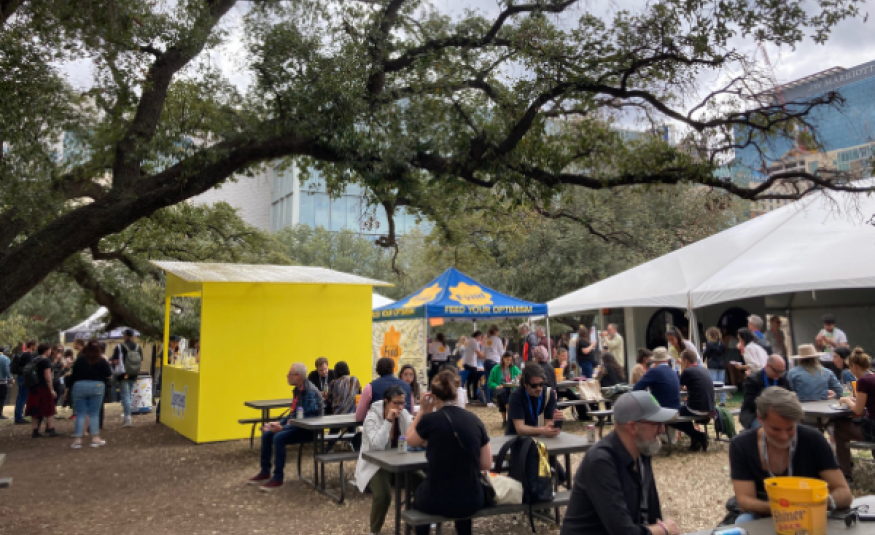Stephanie Selesnick reports from Austin, Texas on SXSW, which ran 11-20 March
Founded in 1987 in Austin, Texas, US, SXSW® (South by Southwest) is best known for its conference and festivals celebrating the convergence of tech, film, music, education, and culture. The event takes over much of Downtown Austin and its audience is made up of people in creative industries from all over the world.
Beginning as a small music festival, SXSW expanded into film and tech/interactive. In past years, both Obamas spoke. Twitter launched there, as did Uber and Foursquare. This year’s event had 99 films and over 1,400 bands scheduled to play, along with art installations and activations, numerous educational sessions, and keynotes. (For more of SXSW’s history, visit their website: www.sxsw.com/about/history/#timeline).
2022 marked the return to an in-person event and a concurrent digital component. Even though Texas has no Covid mandates, in-person attendees were required to provide proof of Covid vaccines or recent negative test for entry. Masks were required at the indoor events.
The Neal Kocurek Memorial Austin Convention Center is the centre of all activities, hosting the Creative Industries Expo and many other events. The show floor had good traffic, and exhibitors were a solid mix of internationals, established brands, alongside start-ups and local mom & pop outfits.
On the interactive/tech side, the Metaverse and NFTs had their day with companies on the show floor and in hotel ballrooms touting products, solutions, and platforms for each. Space travel and tourism was also popular.
Besides the Expo at the Convention Center, brand activations, lounges, and ‘Houses’ were held throughout the city. For example, the UK House (a venue that was taken over and branded for the 10-day event) held educational sessions during the day, featured British bands in the evening, and served with UK-inspired food and beverages.
Although I didn’t get to visit all the activations, here are some Activation and Experience Tips:
1. Capture all leads. Greeters were at all entrances, electronically capturing the information from all entrants.
2. Have a point to the activation. Work with your clients to make it easy and intuitive for visitors to understand what the brand is selling and/or promoting. Most, but not all did.
3 Keep activations/activities short. Under five minutes – and 2-3 minutes if you want to optimise the number of visitors enjoying the experience, particularly if using VR goggles/headsets.
4. Immersive experiences are awesome – with and without VR goggles/headsets. The XR Experience held in dimmed ballrooms at the Fairmont Hotel, showcased (mostly) independent film makers. VR goggles and headphones were cleaned consistently between users and experiences engaging.
Another activation was held on a converted parking lot, which included domed tents with carpeting, comfortable couches, and chairs to view visuals on the tent ceilings with accompanying music. They also had a music stage with seating, a couple of bars, BBQ, and a separate VIP area.
More tips:
Make your event easy to get around. Some 16+ venues (not including music stages) were spread around Downtown Austin, most within a reasonable walk. Free shuttles were also provided, along with pay-as-you-go Razers and pedicabs. There were paper maps, links on the app to get walking instructions and good signage.
There is no such thing as hybrid (my emphasis). There are two concurrent events running at the same time. One in person and one online. Plan for both. Staff for both. Spend for both.
Work with the city. The city of Austin has been a great partner in the success of SXSW. Know the value you bring to cities (publicity reach, visitor and exhibitor spend) where your events are held.
From a small music festival to a world-renowned convergence of all things creative, SXSW has much to offer those of us in the B2B events business. Pay attention to trends in your industries, promote and embrace them, and keep it fun





